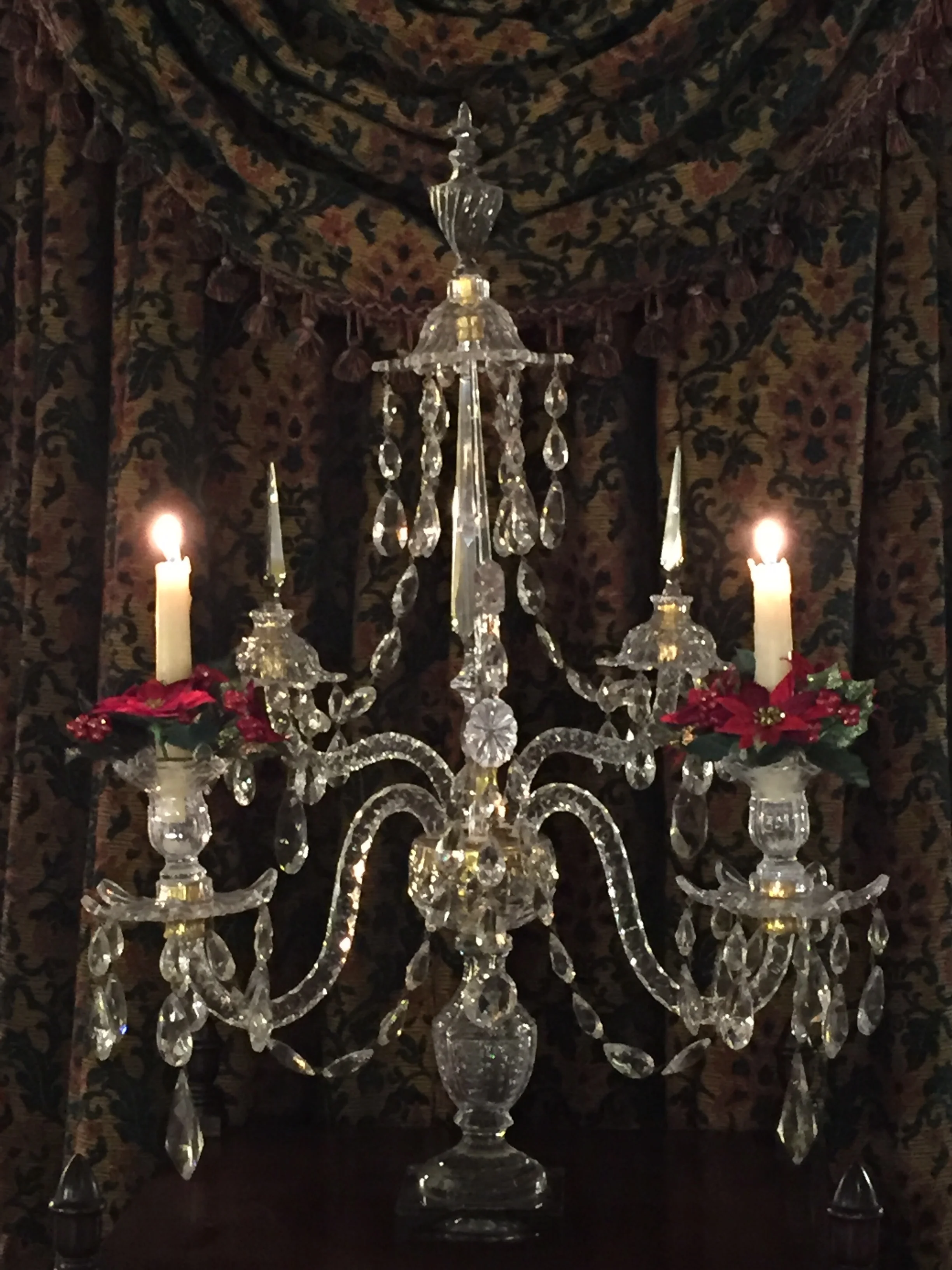There is nothing in the world to equal candlelight to create a magical atmosphere anywhere and at anytine throughout the year, but at Christmas time it is an obligatory addition to every festive occasion and display. Even more so when seen through a cluster of cut crystal glass lustre drops, prisms, icicle pendants, faceted spires, branches and festoons hanging from chandeliers and candelabra. It is the latter which have the most immediate effect, for as they stand at eye level on tables and shelves the ever moving reflections create a constant changing sparkle. The use of such cut glass ornamentation really came into its own with the combination of developments in the decorative glass industry and the fashion for what we call 'classical' form, both of which occurred during and after the 1760's. Candle holders of some significance suspended from the ceiling - later known as chandeliers -have been recorded in inventories from the 14th century being made of wood, brass and other metals, but it was not until the eighteenth century that important examples of glass appear. On the finest the wood was carved and gilt, the brass cast and also gilt and by the the early 1700's several dozen branches held the candles. The Coronation Banquet of George II was illuminated with 1,800 candles plus those on tables and all were lit within three minutes. Candelabra with two or more branches made for the tables of the gentry are rare before the mid 17th century and were mostly of silver. However, by the end of the 18th century they were made with bases of marble, semi-precious stones, malachite, Derbyshire Spa otherwise known as ‘Blue John' and fixed with up to four or five branches of gold, silver, ormolu and of course, glass. Whereas any fine eighteenth century light fitting is as expensive now as it was when made, those of glass can be the best value in terms of glamour and effect, and because of their visual appeal they have never been, nor are they ever likely to be, out of fashion or demand.

